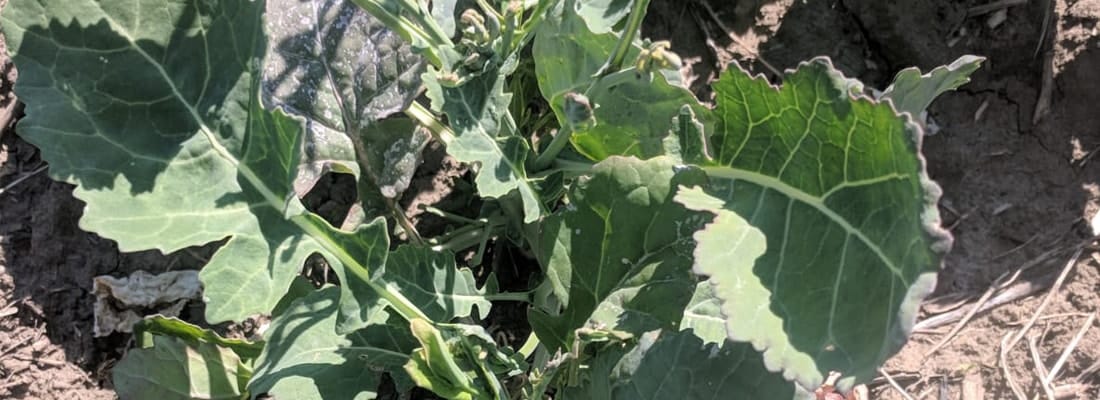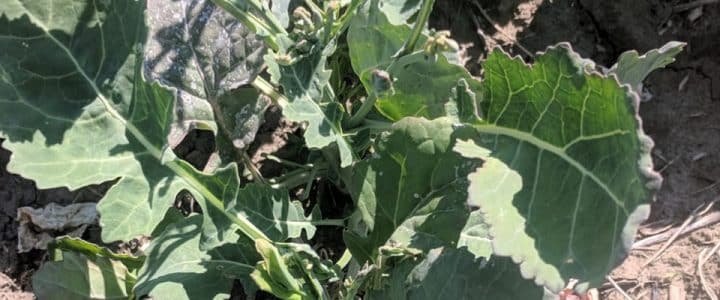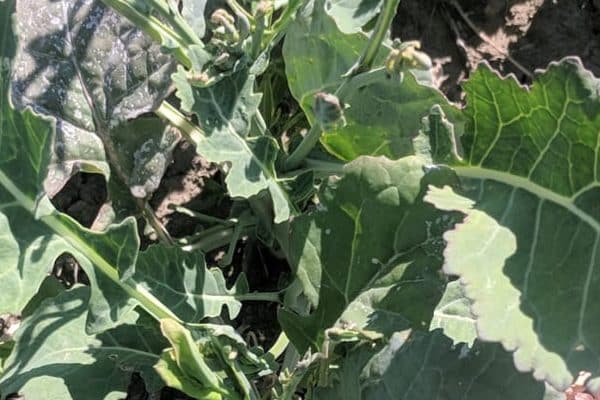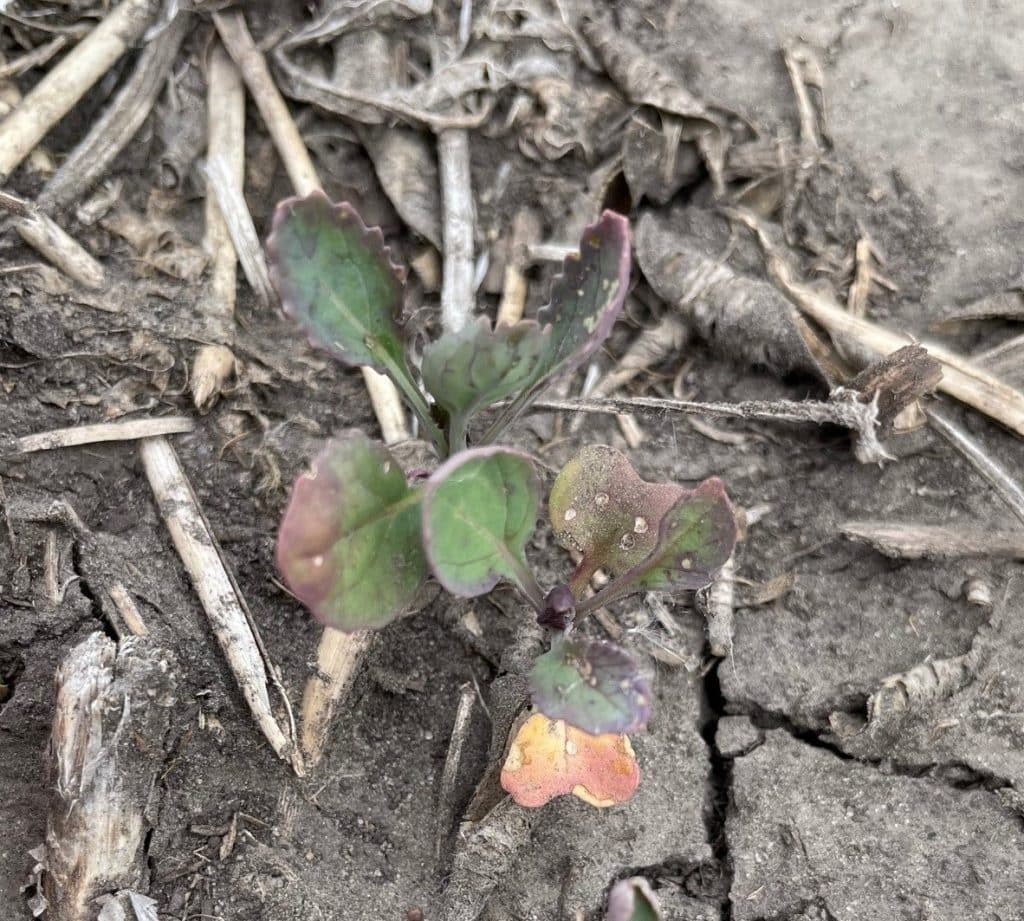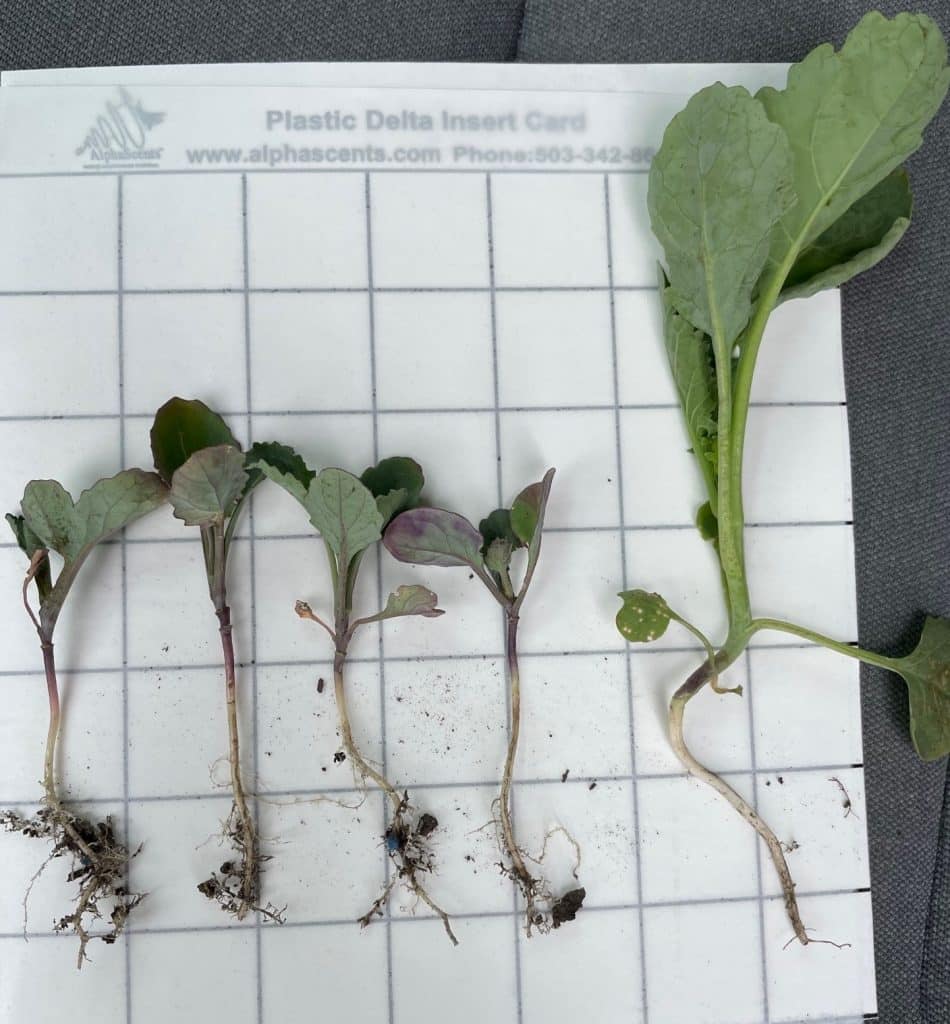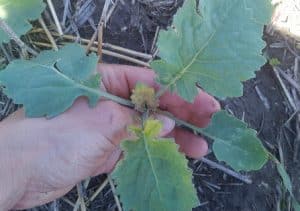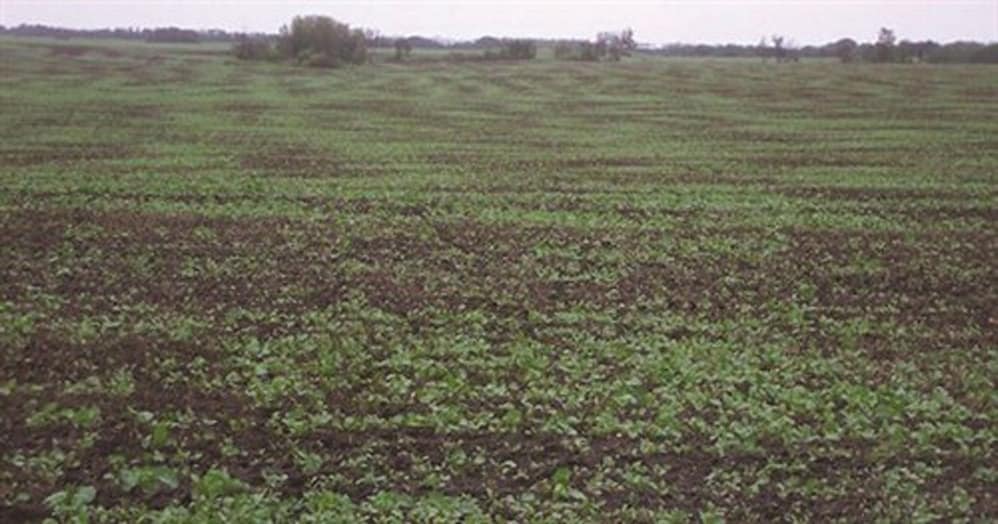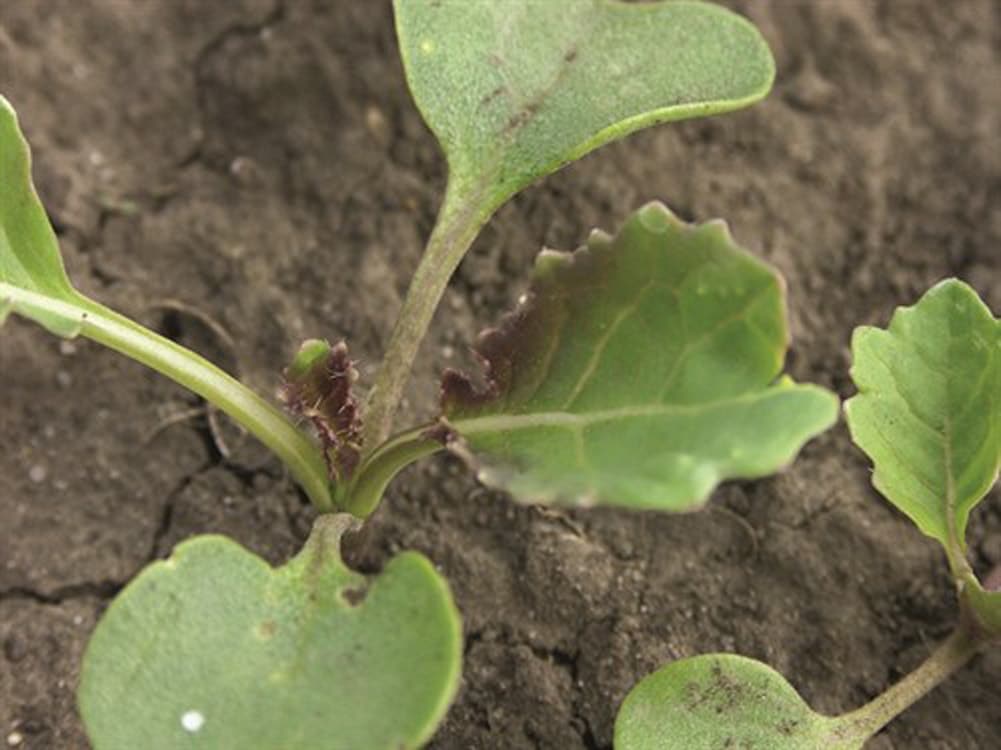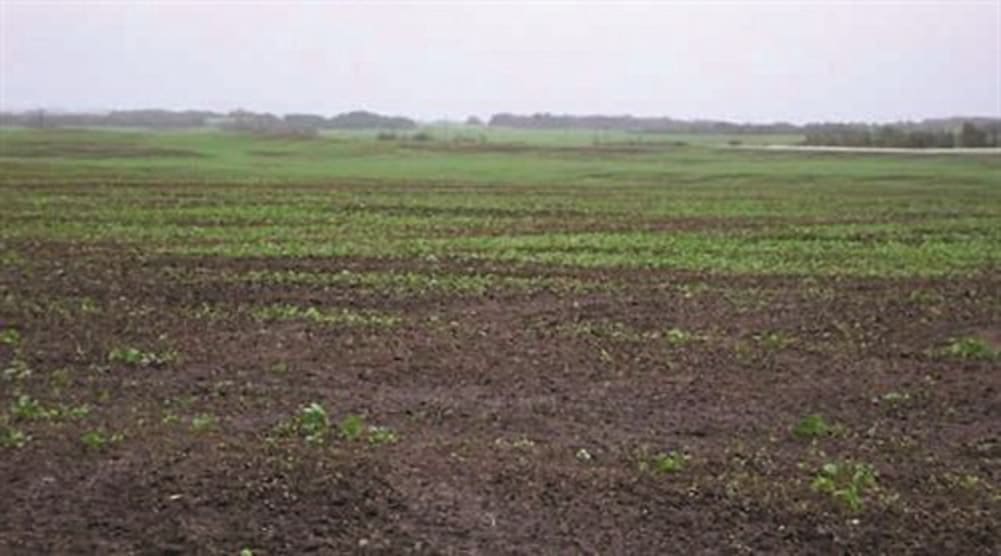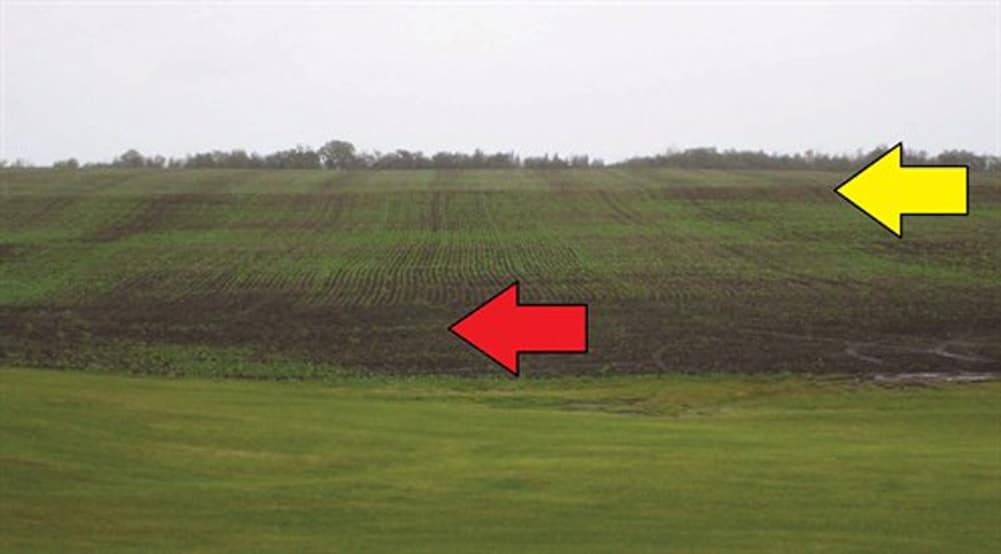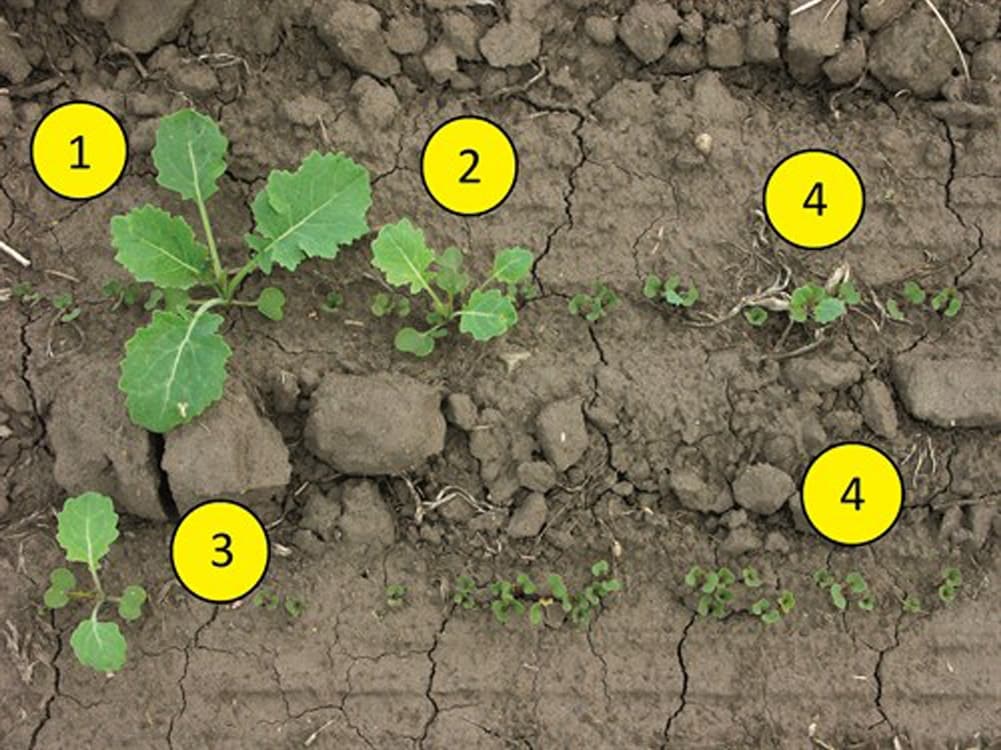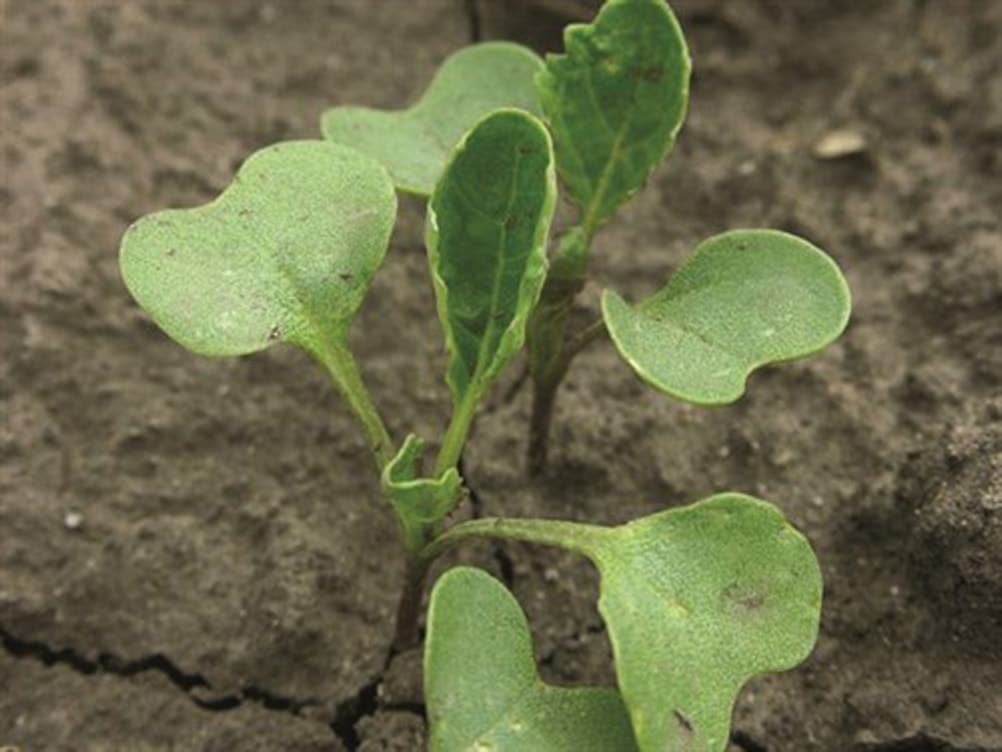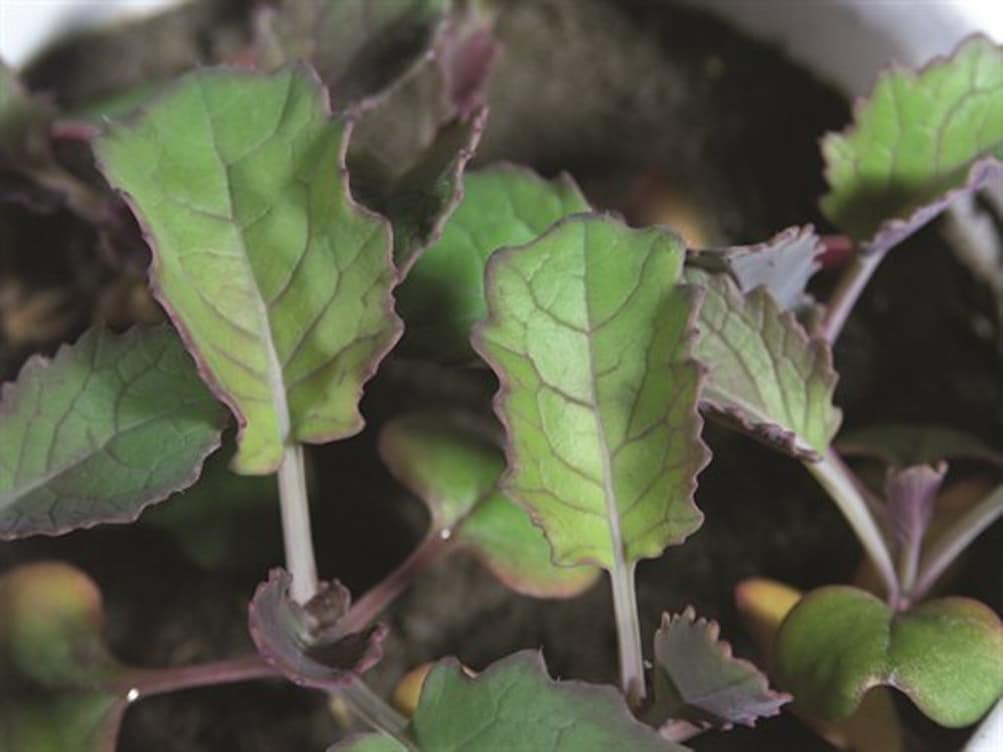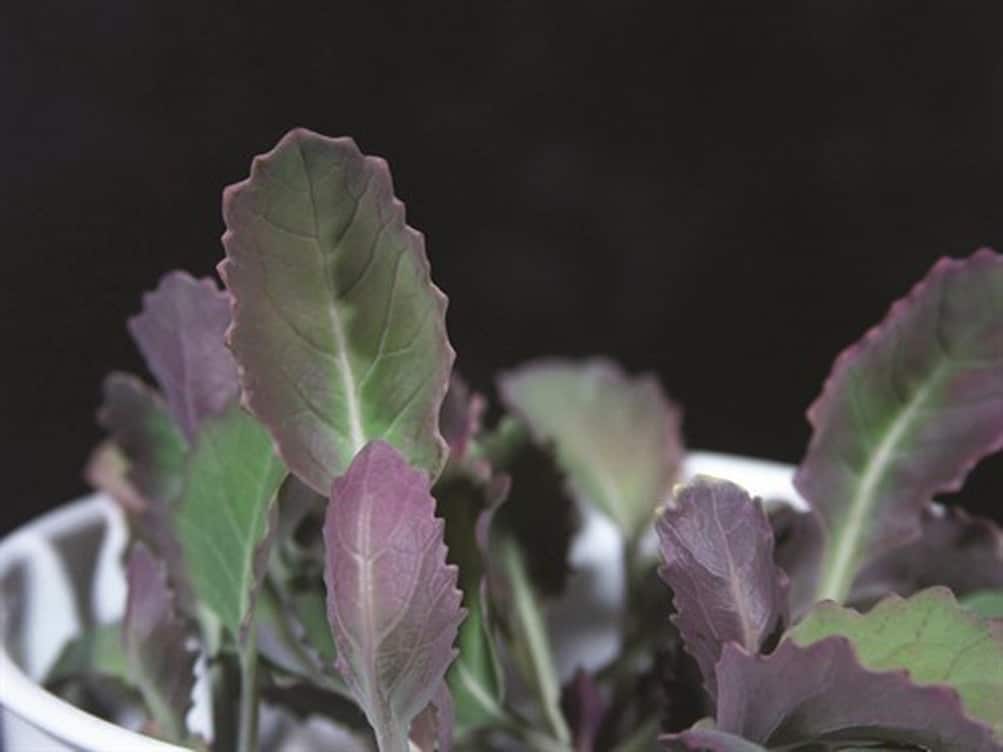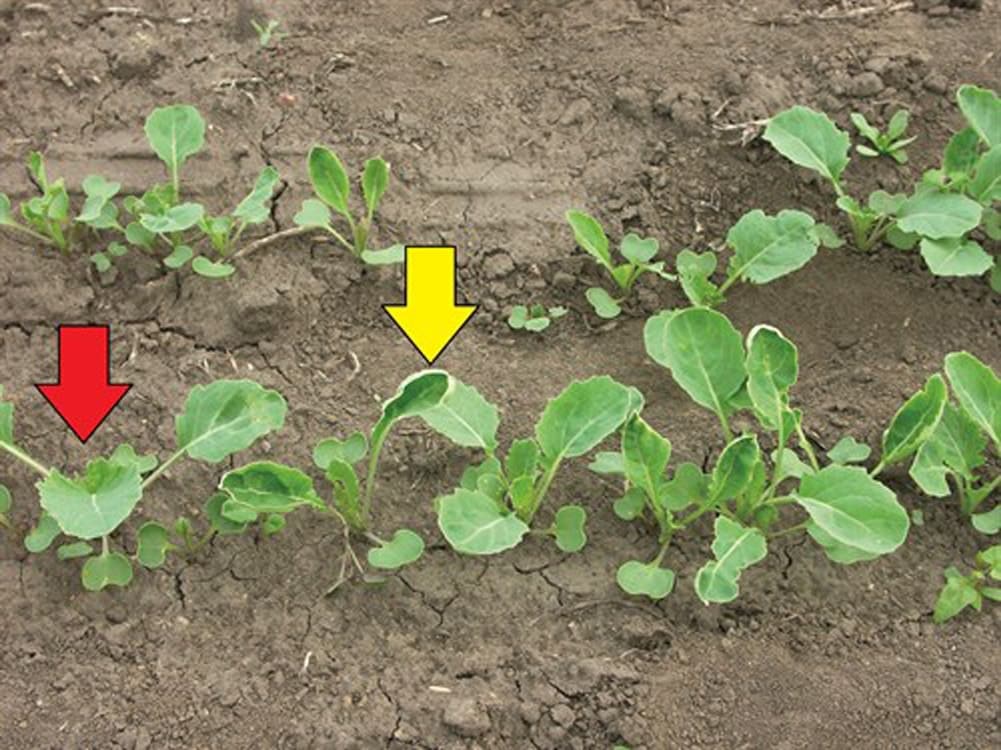Canola injury can occur from exposure to low soil concentrations of some herbicides, in particular several Group 2 herbicides, plus some Group 4, 5 and 14 herbicides. Herbicide carryover can cause crop injury ranging from minimal to complete crop loss.
Therefore it is vital to show canola injury symptoms associated with herbicide residues, and assist in differentiating between symptoms due to herbicide residue and due to other problems.
Best tips for herbicide and residue injury management:
- Be familiar with herbicide labels and follow crop restrictions.
- Mild symptoms of herbicide injury may be confused with symptoms caused by cold temperatures or nutrient deficiency.
Introduction
Significant acreage of canola and new herbicide options in other rotation crops have created more opportunities for residue injury. Injury problems have typically arisen where normal breakdown of herbicides has been inhibited by factors such as drought, low organic matter and pH, sometimes in conjunction with increased frequency of use of residual herbicides in the rotation.
Table 1. Recropping restrictions for residual herbicides
Table 1 provides the number of cropping seasons before each crop can be grown (“1” means that the crop can be grown the year following application). Products with preseeding restrictions in months or days are labeled as such. For plant-back restrictions less than one season; the delay is indicated with a “d” for number of days or with “mths” for the number of months. A blank space means that there are no recommendations given on the product label and a field bioassay is recommended by many product manufacturers to determine if these crops are safe to plant. A field bioassay is a strip of a test crop that covers an area of the field that is representative of the field variation and should include an untreated area.
*The minimum re-cropping intervals are listed. These intervals may be longer than those listed depending on the use rates, region, province, soil types, environment, time of application and crop varietyA variety is a variant of a species that evolved in nature without the intervention of humans, e.g. Brassica oleracea variety (in short form, var.) botrytis (cauliflower), var. capitata (cabbage), var. italica (broccoli), etc. More. Refer to product page of your provincial crop protection guide (ex. Alberta Crop protection Guide (The Blue Book), Saskatchewan Guide to Crop Protection, Manitoba Guide to Field Crop Protection, Ontario Crop Protection Hub) for more information.
†Replant intervals are for high rate
Note: The re-cropping intervals listed may not be sufficient to prevent crop injury during periods of below average rainfall.
Factors affecting herbicide carryover
Field history
Residual herbicide injury can only occur in fields with a history of Group 2, 4, 5 or 14 herbicide applications. Not all of the Group 2, 4, 5 or 14 herbicides have residual action and only some affect canola. Refer to specific herbicide labels for restrictions on recropping to canola.
Soil characteristics
Interactions between soil factors are complex and may either slow the rate of herbicide breakdown or increase the availability of any remaining herbicide residue to the crop.
Organic matter and soil texture
As organic matter decreases, microbial degradation of the herbicide decreases, increasing potential carryover. Soils with low clay content have decreased adsorptionThe process of electrical attraction that holds cations to negative surfaces of soil colloids. More of residual herbicides, thereby increasing potential carryover. Therefore, potential for injury on subsequent canola crops increases as organic matter decreases, and clay content decreases (except where soluble herbicides are leached by lots of rainfall).
pH
Soil pH affects herbicide decomposition and availability to the subsequent canola crop.
Climate
Under drought conditions, microbial and hydrolytic breakdown of herbicides is decreased and adsorptionThe process of electrical attraction that holds cations to negative surfaces of soil colloids. More of herbicide to soil particles is increased. The influence of drought on soil may override any previously favourable pH or organic matter conditions.
When microbial decomposition is an important mechanism (e.g. imidazolinones), decomposition is reduced by cool soil temperatures.
Field scouting
Injury can occur anywhere in the field and may be patchy. Patches that appear bare have normal emergence but there is considerable variation in plant development. Areas of low organic matter, headlands, corners or overspray may have more injury.
A severely affected area (red arrow) and the effect of slope (yellow arrow) are shown.
Carryover can have considerable field variation in acreage affected and severity of plant injury. Uneven plant stands can affect crop maturity and weed pressure.
Symptoms can vary in a small area. All plants in this picture emerged at the same time, however they showed different levels of impact. Plant number one was unaffected, two had mild injury, three had moderate injury and four had severe injury.
Symptoms similar to herbicide carryover injury
Mild symptoms of herbicide injury may be confused with symptoms caused by cold temperatures or nutrient-deficient soil. Cold stress symptoms can arise only after a cold temperature event. Recovery will be rapid as temperatures increase. Nutrient stress symptoms are extremely unlikely to occur at the cotyledon stage as nutrient demands are low. A soil test can determine nutrient availability.
Cold temperature symptoms
Since the first and second leaves are of normal size, the purpling observed is not herbicide injury. The purpling is a result of anthocyanin production caused by cold temperatures. Purpling may be towards the base, on the leaf margins or may cover entire young leaves of the plant. This symptom will diminish as temperatures increase.
In this case, cupping was caused by cold temperatures and symptoms quickly diminished as temperatures increased.
Cupping was caused by a low level herbicide residue. Variation in herbicide carryover means uninjured (red arrow) and injured (yellow arrow) plants may be found in close proximity. Cold stress generally causes more uniform damage.
Nutrient deficiency symptoms
These plants were grown under wet conditions from the two-leaf stage and show classic purpling, cupping and chlorosis. Poor aeration to the roots has created nutrient deficiencies.
